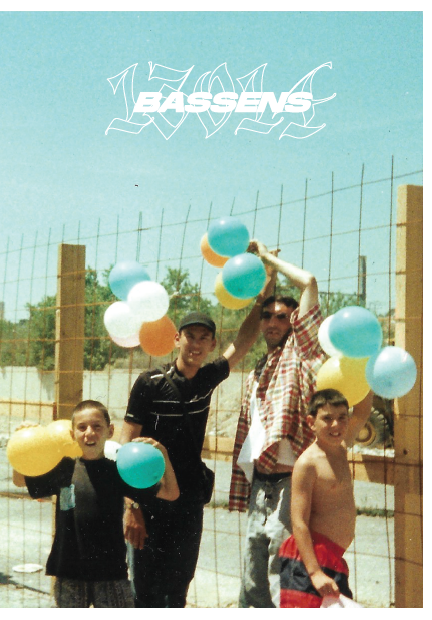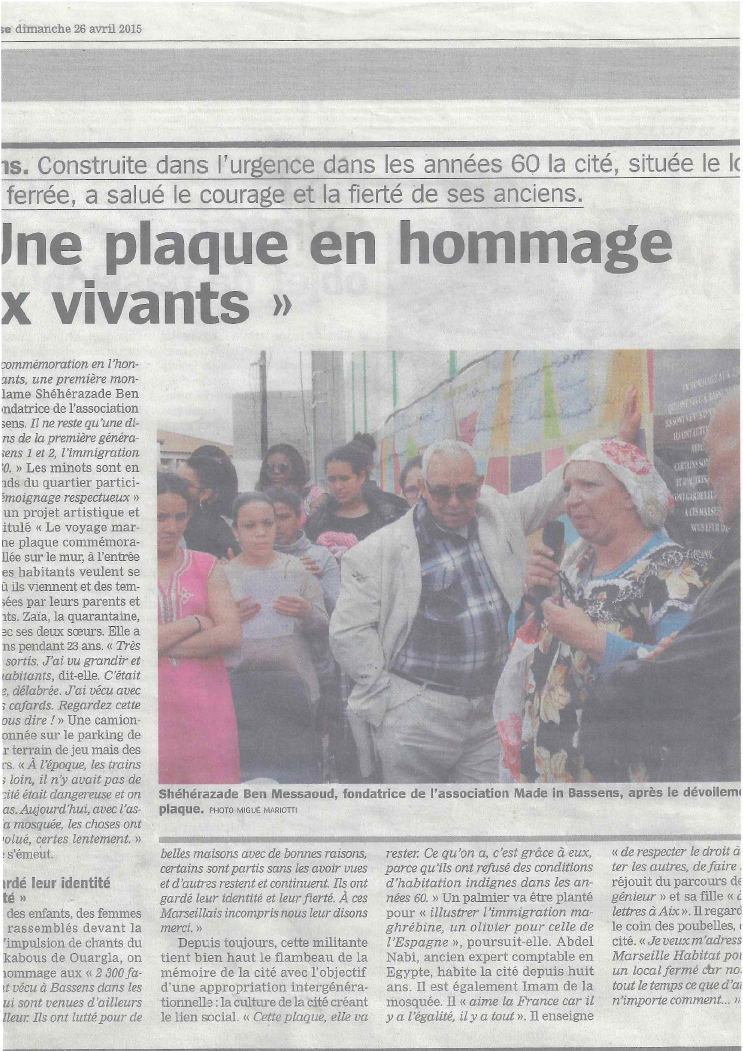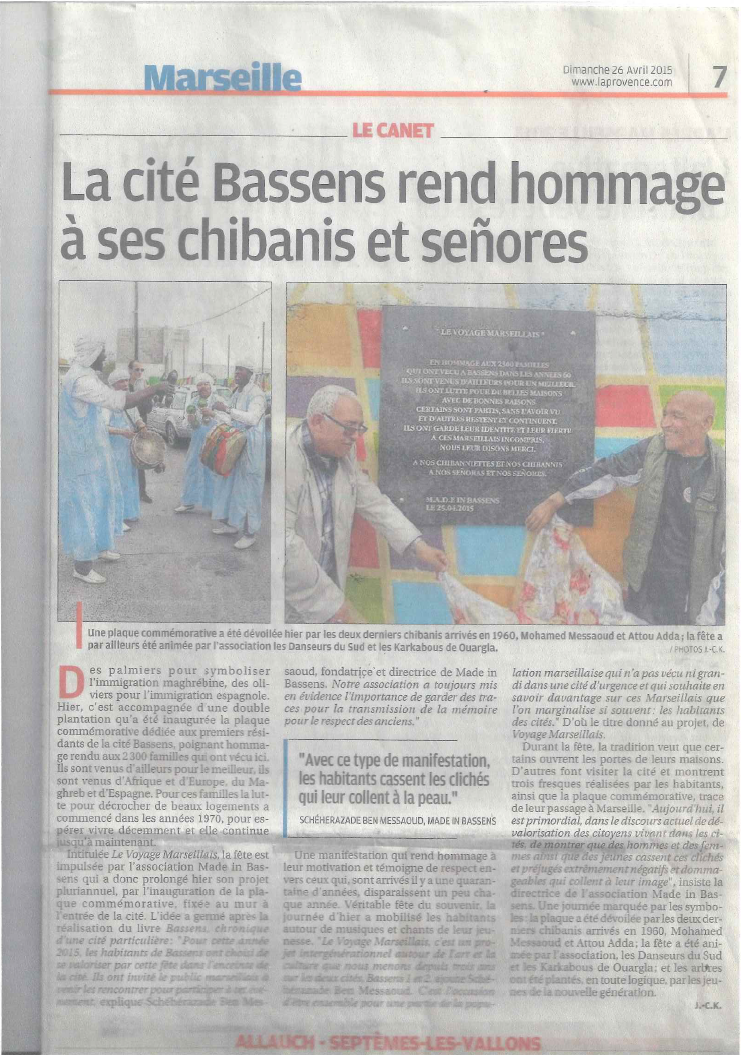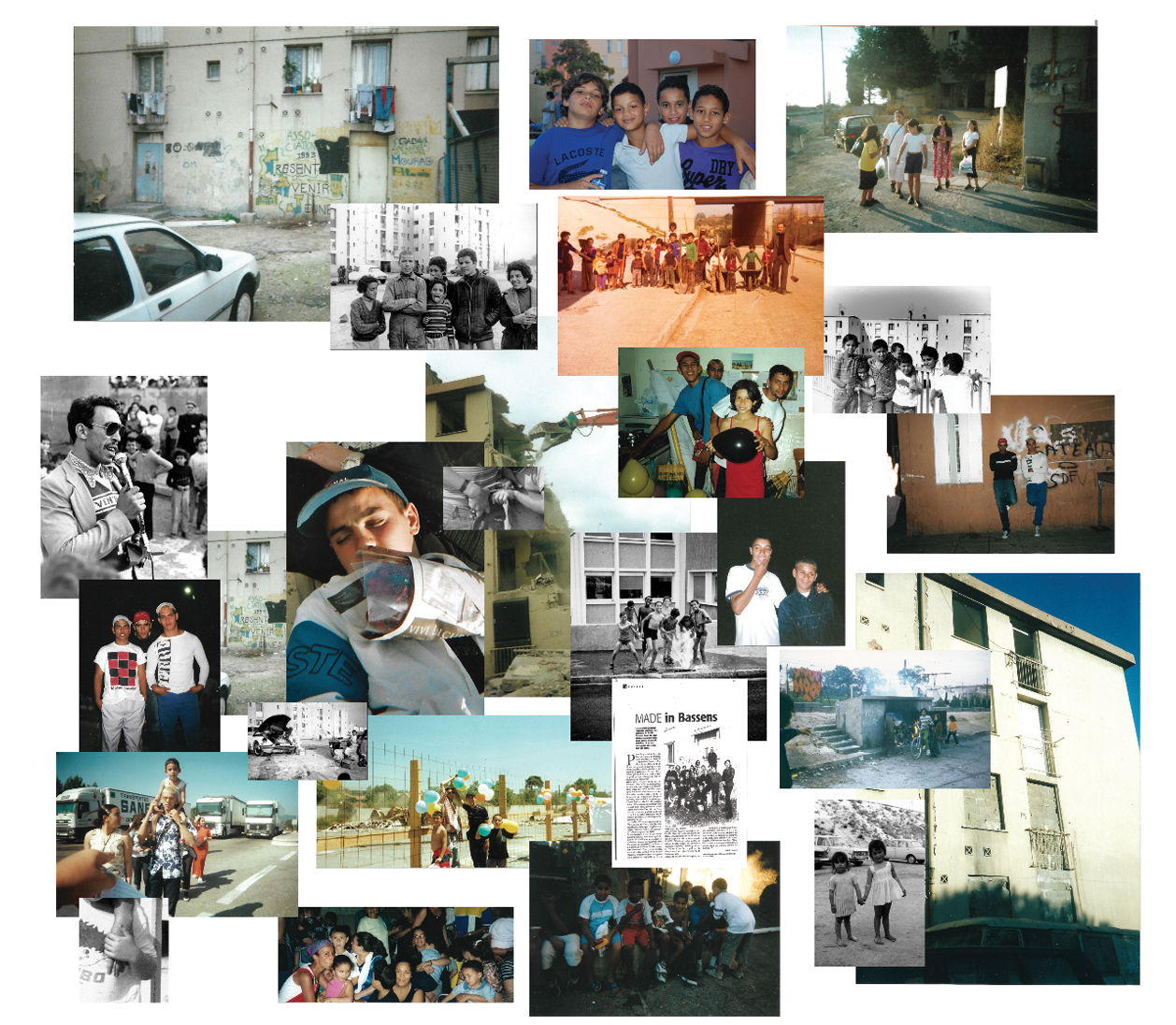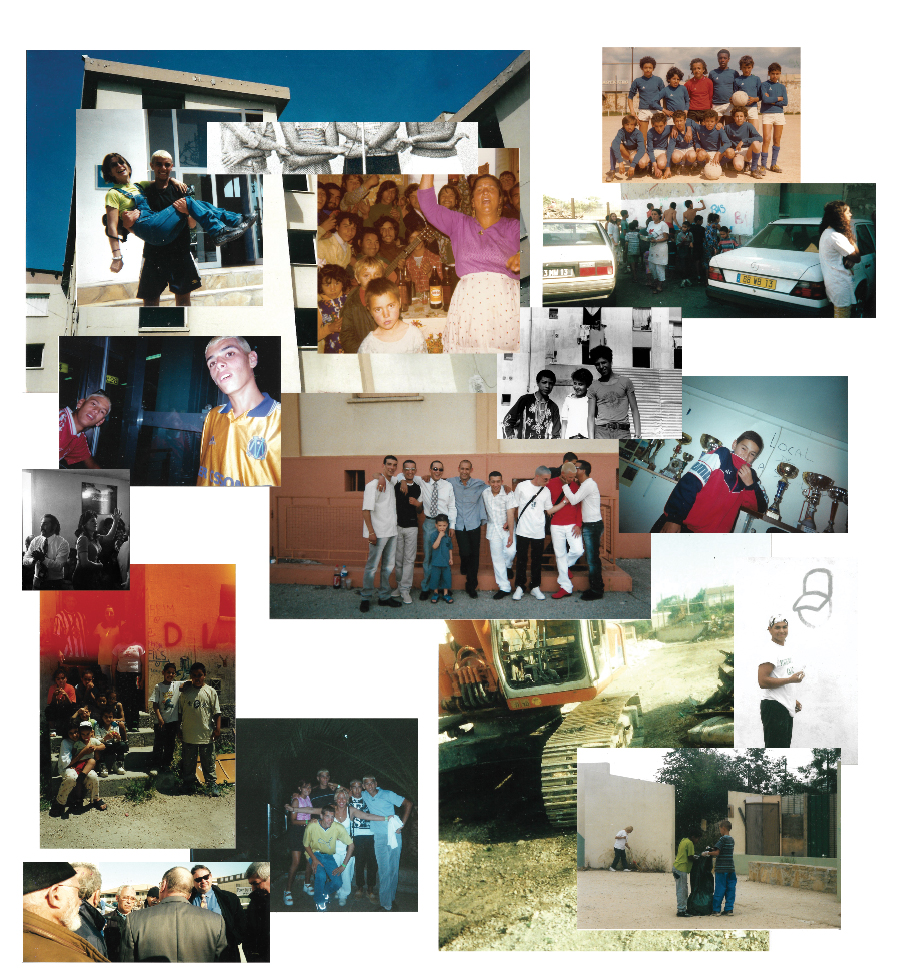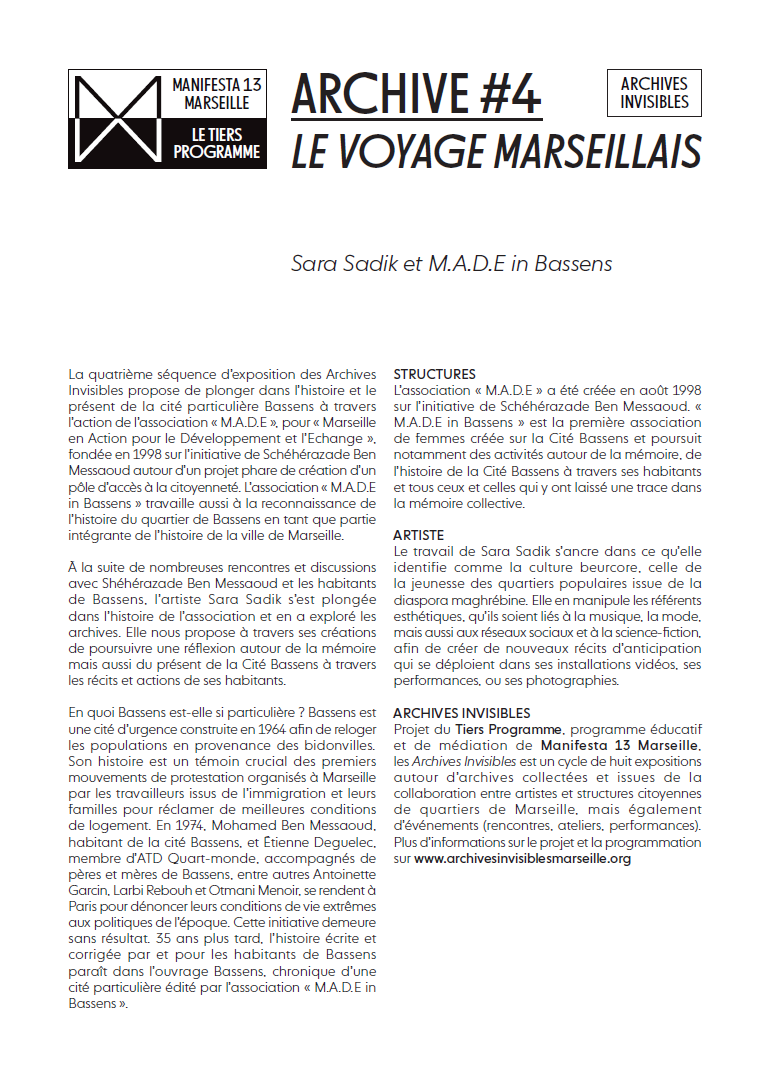Archives : M.A.D.E in Bassens
Artistes : Sara Sadik (Marseille)
The association “M.A.D.E in Bassens” works on the recognition of the neighborhood of Bassens as an integral part of the history of the city of Marseille. Bassens is made of emergency housings built in 1964 to rehouse populations from the slums. Its history is a crucial testimonial to the first protest movements organised in Marseille by immigrant workers and their families to demand better housing conditions. In 1974, Mohamed Ben Messaoud, who lived in the Cité Bassens, and Étienne Deguelec, a member of ATD Quart-monde, went to Paris to report on their extreme living conditions to the politicians of the time. 35 years later, the book Bassens, chronique d’une cité particulière (Bassens, chronicle of a special city) was published by and for the inhabitants of Bassens with the association “M.A.D.E in Bassens”.
In addition to this, Bassens was the venue for “Bassens Support Cité 1”, an exhibition which has risen to cult status. It was organised in 1996 and is considered to be a turning-point in the history of art in the public space in Marseille. Its initiator was Malik Ben Messaoud, a sculptor from Bassens who created monumental sculptures and who has initiated a defiant creation project on the theme of the memory of the neighbourhood’s inhabitants.
M.A.D.E IN BASSENS
The “M.A.D.E” association, (Marseille en Action pour le Développement et l’Echange – Marseille in Action for Development and Exchange) was founded on the initiative of Schéhérazade Ben Messaoud in the form of a flagship project for the “creation of a node of accessibility to citizenship”. Created in August 1998, “M.A.D.E in Bassens” is the first women’s association created in the Cité Bassens and it continues to organise activities based on the memory and the history of Cité Bassens through its inhabitants and all those who have left a trace there in the collective memory.
Sara Sadik
Sara Sadik’s work is anchored in what she identifies as “Beurcore culture”, that of the youth of working-class neighbourhoods from the Maghreb diaspora. She manipulates aesthetic references, whether related to music, fashion, but also to social networks and science fiction, in order to create new stories of anticipation that unfold in her video installations, her performances, or her photographs.
This project is supported by the Drosos foundation.
![]()
